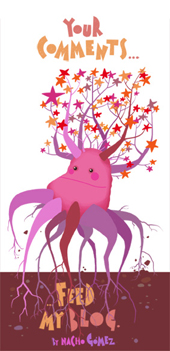Paralelamente también se intentó trabajar en el tema a través de la lengua inglesa, contándose para ello con nuestra auxiliar Claire, aunque la premura de las fechas determinó que todo quedara postergado para un momento posterior. De todas formas, dado que es un buen recurso para practicar diferentes destrezas lingüísticas, hemos pensado que un buen sitio para ubicarlo es este blog, sirviendo al mismo tiempo como homenaje a esa maravillosa obra. Os dejamos con el texto.
Juan Ramón Jiménez Mantecón
(1881-1958) Juan Ramón was born in Moguer, a small town of Huelva in Andalucía, Spain on December 32rd, 1881. Whe he was nineteen years old, he moved to Madrid where he often would meet with Rubén Darío, and Valle-Inclán among others. His nostalgia and delicate health condition made him return to Moguer, longing for the warmth of his childhood. However, when he returned, his town was destroyed. Juan Ramón addressed the social reality of his town in his work "Platero y yo". In 1956 he was awarded the Nobel Prize, the same year that his wife, Zenobia Camprubí, died.Two years later in 1958, Juan Ramón the poet died.
Juan Ramón was a man with a strong temperament and great sensivity. In this work, "Platero y yo", Juan Ramón Jiménez tells the story of his relationship with a donkey named Platero. Man and animal, they are inseparable and have a strong bond. Juan Ramón tells the donkey his feelings and all types of news, sometimes with words of joy and other times words of sadness and grief. The majority of the time, Juan Ramón and Platero passed through the fields, wandering and reading.












No hay comentarios:
Publicar un comentario